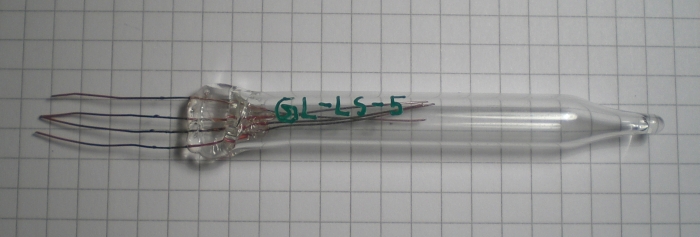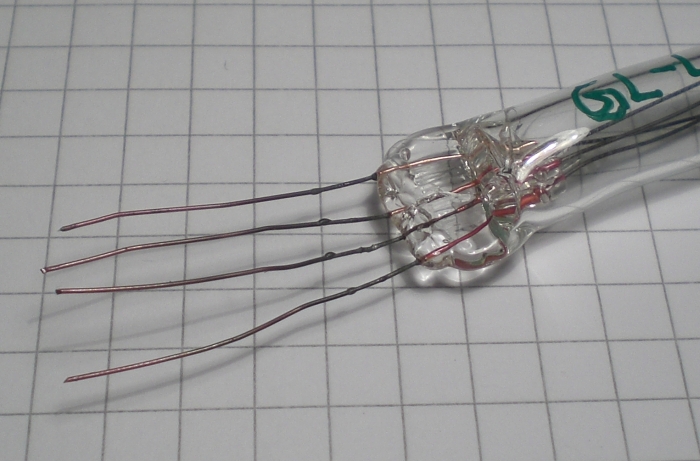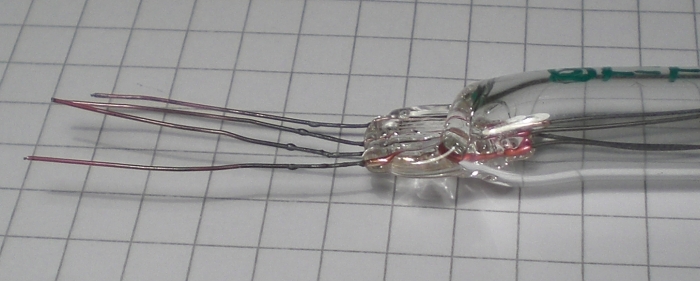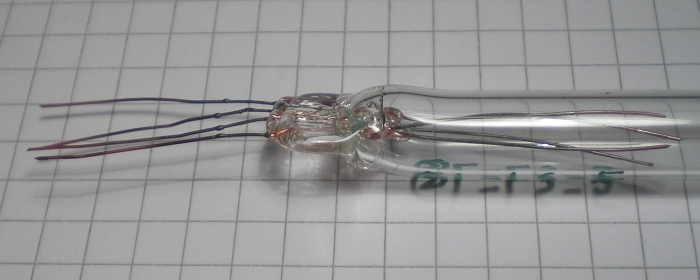www.jb-electronics.de » Elektronik » Nixie-Röhren » Selbstgebaute Nixies » GL-LS-5
GL-LS-5
Das Glow Lamp Lab Sample 5, oder kurz GL-LS-5, ist eine vierpolige Mehrkathoden-Glimmlampe, die aus 9mm-Kalknatron-Glasrohr und Dumet-Draht besteht:

Sie war als Machbarkeitsstudie eines Quetschsiegels mit vier Polen gedacht; leider ist das Siegel beim Auskühlen zersprungen:

Die kleinen Kügelchen geschmolzenen Metalls an den Zuleitungen stammen vom Versiegelungsprozess, bei dem der Dumet-Draht hell glühend war.


Wie schon bei der GL-LS-4 wurden auch hier die Dumet-Drähte vor dem Siegelprozess zunächst verglast und dann noch miteinander verschmolzen, um eine höhere Stabilität zu gewährleisten. Leider war die verglaste Strecke zu kurz, sodass sich erhöhte Spannungen im Quetschsiegel bildeten und dieses wenige Minuten nach dem Quetschprozess zersprang.
Im Prinzip ist es allerdings durchaus möglich, ein solches Siegel herzustellen, wie die GL-LS-6 beweist.